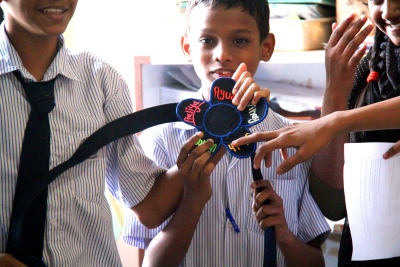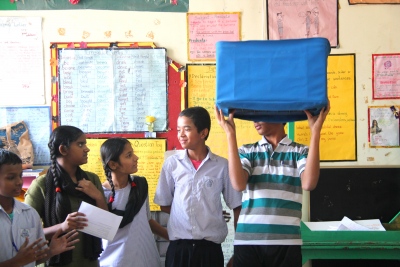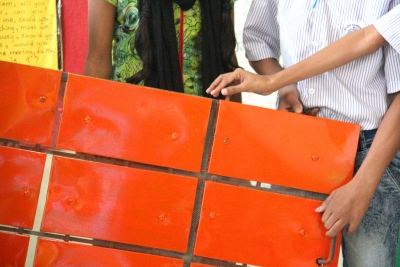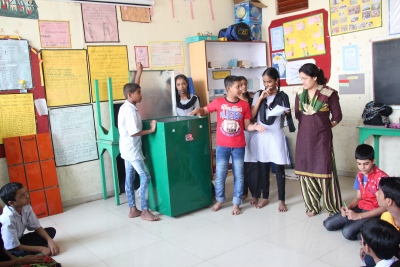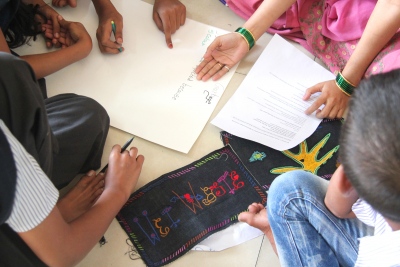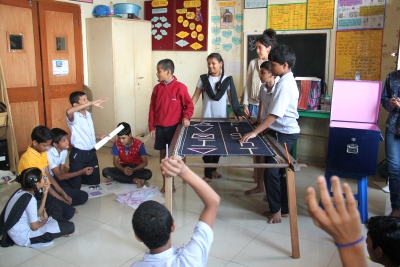
Assessing the 'Avoid Fight' table in the classroom
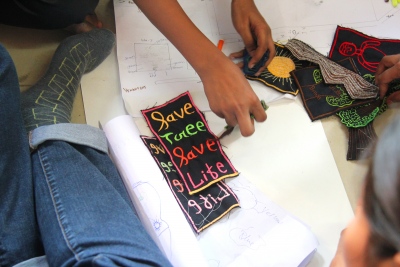
Tree box signage
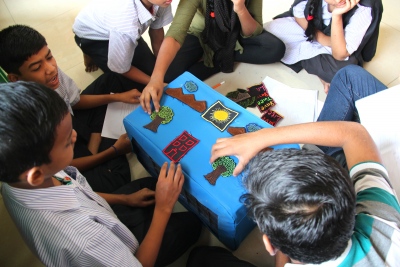
Arranging the 'tree box' labels
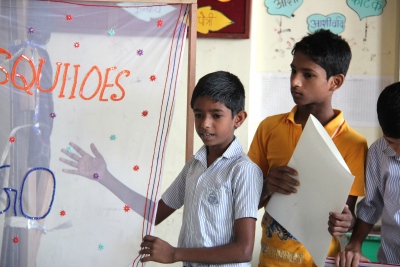
Preparing the Mosquito net door and frame
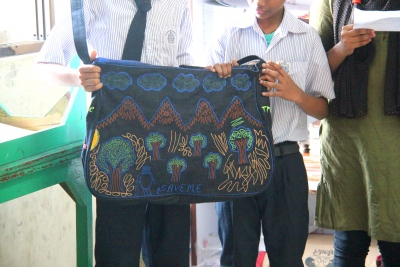
Assessment of the 'save trees' embroidered bag
Design Development
Mosquitos
The children's final designs focused on stopping mosquitos entering homes. They designed two interventions: one embroidered window and one embroidered door net, each on a wooden frame, both jointly made by the tailor, carpenter and hand embroiderer. They made intricate designs for the nets, to embellish their products and make them more attractive to settlement dwellers. The children thought that more people would be interested in using the nets if they were embellished. They chose bright colours, adding borders and beaded fringes to make them more decorative. The nets could be removed from their frames in order to be washed.
More Trees
Final designs included an embroidered bag for shopping, with drawings highlighting the need to 'save trees' and illustrations of green places, mountains and forests; and a mobile planter, made from a plastic crate usually used by vegetable sellers, wrapped in a decorative embroidered sleeve, also depicting a similar design to that of the bag. The planter designed to facilitate growing edible plants used in cooking local food such as curry leaf, mint, ‘ajuine’, bay leaf and coriander, as well as tulsi (holy basil, a plant known for its ayurvedic[1] properties). We found the crate at a vegetable market and bought plants from a local nursery. The planter was small enough to be carried into the home at night to keep it safe from theft. Both the bag and the planter covers were made by the bag maker and machine embroiderer.
Fighting and Bad Language
The children were very happy with their first hand-embroidered prototype table top. However, they added foldable legs and also commissioned a 'fine-box' made of tin. The 'fine box' was decorated with intricately made 'patches' designed by Sanika, announcing the amount of 100RS for using bad language, and slogans such as 'don't use bad language'. Vivek designed a large hand embroidered fabric banner to communicate their idea. These pieces were made by the hand embroiderer and carpenter.
Open Gutters
The final gutter cover design used tin box lids, along with a metal mesh beneath a welded frame surround, to stop mosquitos from entering and exiting and objects falling in the gutters. The tin box maker provided the tin lids with which to construct the new gutter cover, however the carpenter created the final design. The cover was painted orange to make it visible with a view to being painted with designs, transforming it into a play device for younger children.
Rubbish and Recycling
The group decided to design segregated wet and dry metal waste bins, to be the same size as those provided by the municipality, but with additional embroidered signage. The signage shows the type of waste to be thrown inside in written and drawn form. One bin for recycling and dry waste was painted green and one bin for food and wet waste was painted brown. The carpenter organised fabrication of the bins outside of the settlement and the machine embroiderer made the labels.
